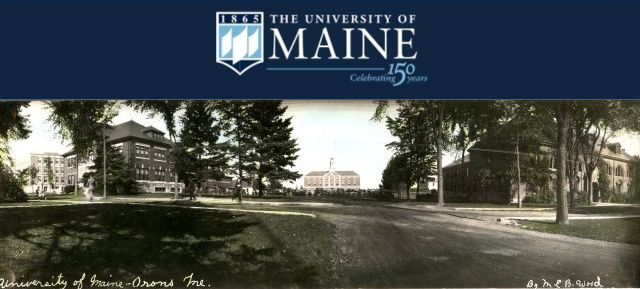
General University of Maine Publications
Document Type
Presentation
Publication Date
2008
Abstract/ Summary
The purpose of the Master Plan is to support the evolving academic and research mission of the University while promoting sustainability at the broadest level. protecting architectural and landscape resources, improving campus life, and providing a comprehensive vision for the future.
The plan goals were:
- advance the land grant mission through stewardship, management and local partnerships.
- enhance the cultural legacy of the campus by restoring and extending the quality and character of the core campus landscape.
- create a collegiate environment accommodating strategic academic and research expansion while enhancing the sense of community and fostering collaboration.
The University of Maine has a planning heritage distinguished by Fredrick Law Olmsted, Sr. and the Olmsted Brothers. The University Mall and front lawn overlooking the Stillwater River are assets of the Olmsted legacy along with a range of historically significant buildings.
Several areas are in need of improvement. The south campus, originally intended to become the South Mall. remains incomplete and fragmented. Vehicular traffic and parking lots dominate the campus creating conflicting and confusing circulation patterns. Campus expansion to the east is haphazard and has eroded the surrounding Demeritt Forest, and wetland environments. The Master Plan vision provides strategies for protecting the historic landscapes, organizing new districts, reutilizing existing historic buildings, utilizing land more efficiently through redevelopment and infill, and a comprehensive sustainability strategy.
Sasaki Associates Inc. worked collaboratively with the Campus Planning Committee in creating the University’s comprehensive Campus Master Plan. The Master Plan, under the direction of Greg Havens, a principal at Sasaki Associates, received the Merit Award for Excellence in Planning for an Established Campus by the Society for College and University Planning (SCUP).
Repository Citation
Sasaki Associates Inc. and University of Maine Campus Planning Committee, "Presentation 2008 University of Maine Master Plan" (2008). General University of Maine Publications. 1704.
https://digitalcommons.library.umaine.edu/univ_publications/1704
Version
publisher's version of the published document
Rights and Access Note
This item is protected by copyright and/or related rights. You are free to use this Item in any way that is permitted by the copyright and related rights legislation that applies to your use. In addition, no permission is required from the rights-holder(s) for non-commercial uses. For other uses, you need to obtain permission from the rights-holder(s). For more information, contact Special Collections.


